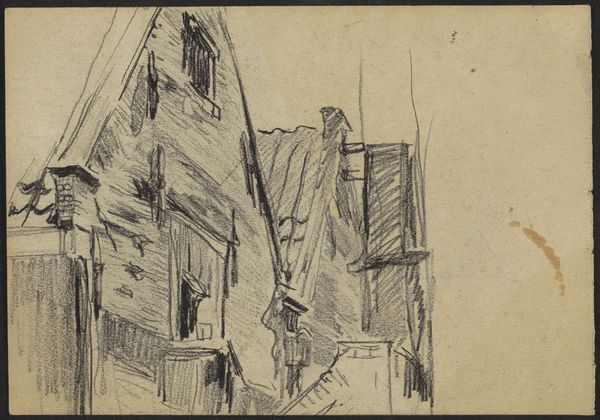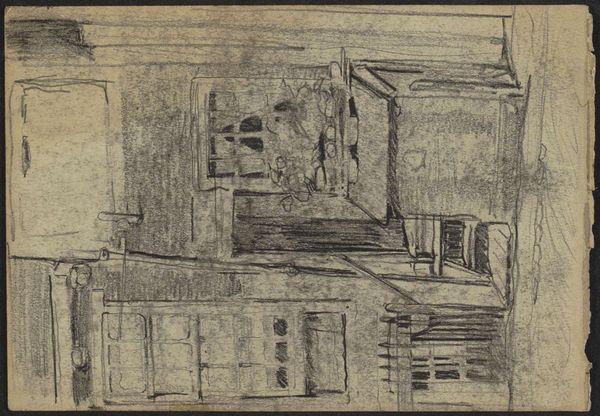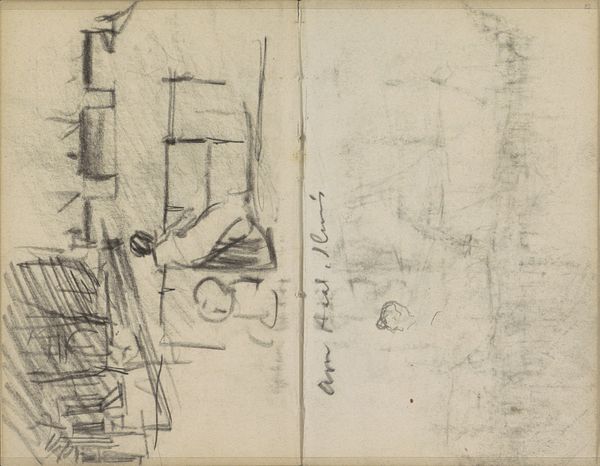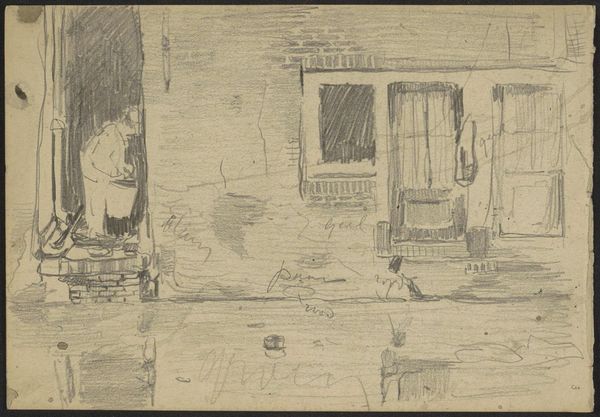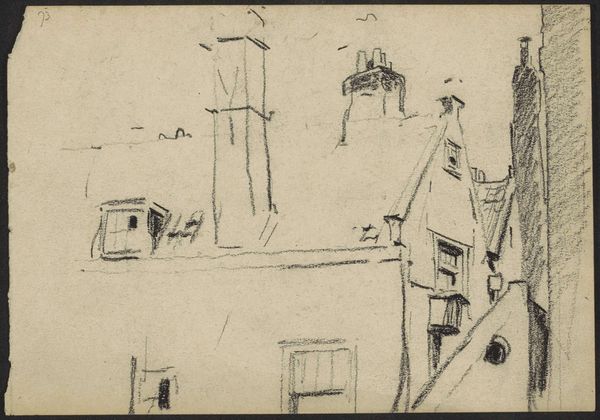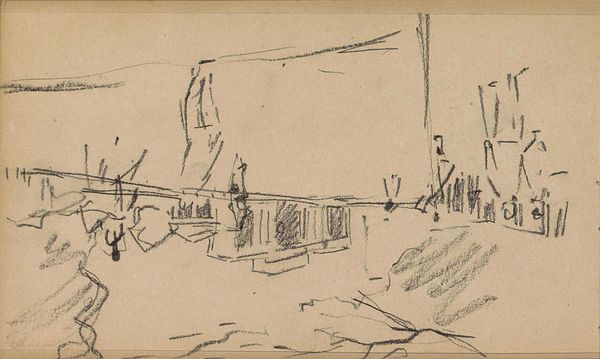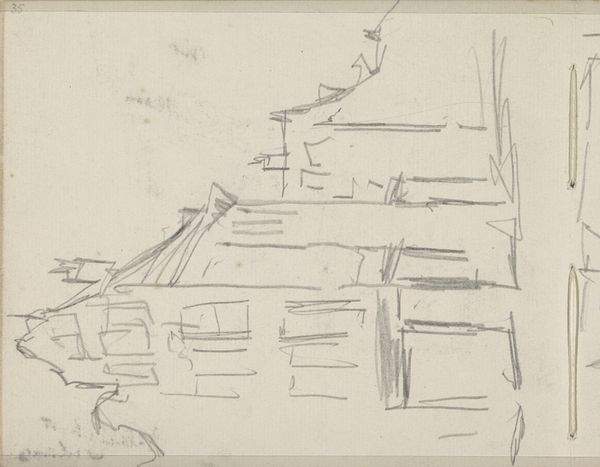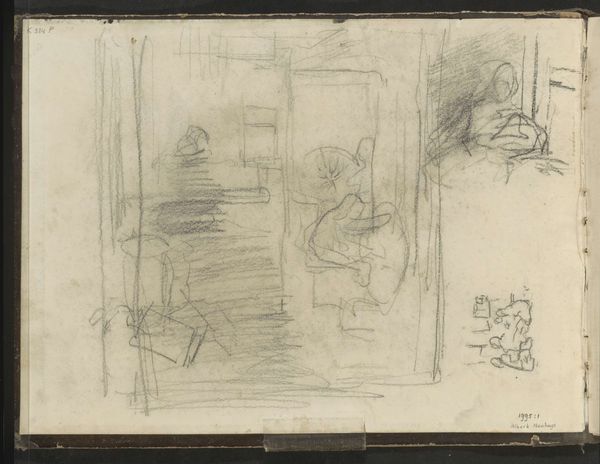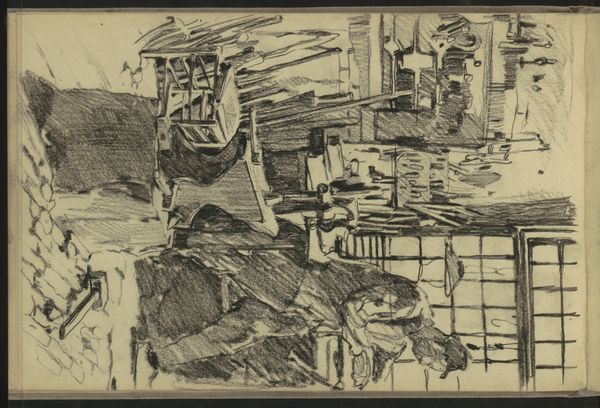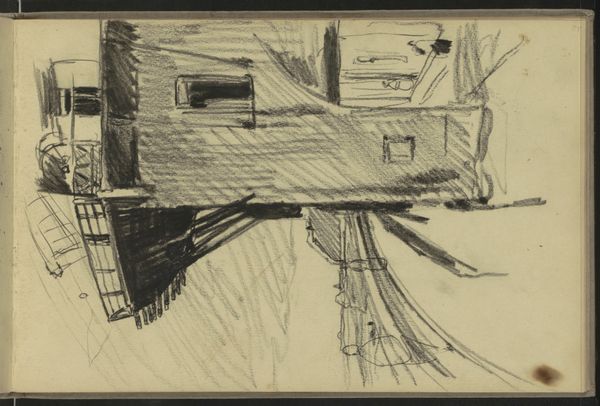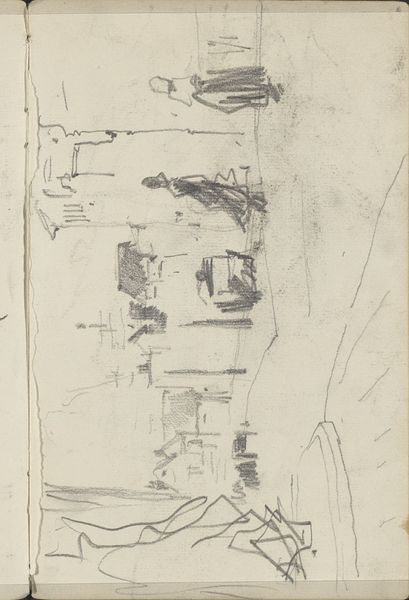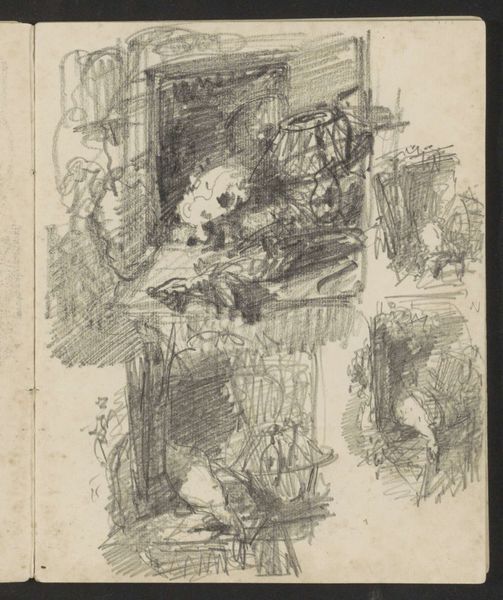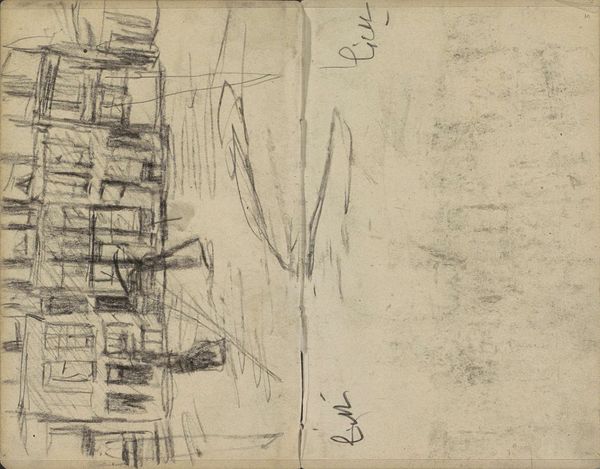
drawing, pencil
#
drawing
#
pencil
#
cityscape
#
realism
#
building
Dimensions: height 201 mm, width 140 mm
Copyright: Rijks Museum: Open Domain
Editor: So, this is "Zijgevel van Korte Dijkstraat 2 in Amsterdam," a pencil drawing by Willem Witsen from before 1909. It's currently held at the Rijksmuseum. I’m immediately drawn to how raw and unfinished it feels; the stark lines and unshaded areas make it feel like I’m peeking into the artist’s working process. What can you tell me about it? Curator: Looking at this sketch, I'm particularly interested in how Witsen has used the humble pencil not just to depict, but to almost *construct* the building facade. Note the deliberate marks, the varying pressure used to suggest depth and texture of the material itself. He's less interested in creating an illusionistic space than in revealing the materiality of both the building and his medium. Editor: That’s interesting! It's like he's highlighting the building's structure while simultaneously showing us how he built the image itself. Curator: Precisely. Consider also the social context. What does it mean to choose such an everyday scene—the side of a building—as a subject? The choice speaks to a changing perspective in art at the time. Less grand subject matter, more attention to the common, to the lived experiences of urban existence. Editor: So, it’s not just *what* he's drawing, but *how* and *why* he’s drawing it that gives it meaning? Curator: Absolutely. It is about understanding the artist’s labor, their choices regarding material, and how these intersect with the social fabric of their time. Are there signs of aging evident on this building? Peeling paint, uneven bricks, signs of repair? To what degree are such ‘defects’ incorporated or rejected within the artistic process and vision? This becomes an essential aspect to interpretation. Editor: I never considered the building itself as a "material" to analyze. I guess that opens up a whole new way to think about realism and art making in general. Curator: Indeed. By focusing on the means of production, we can see how art can reflect and even shape our understanding of the world.
Comments
No comments
Be the first to comment and join the conversation on the ultimate creative platform.
